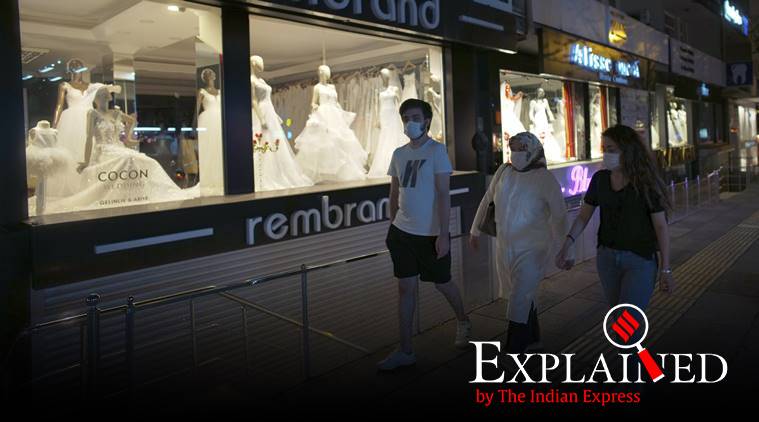
[ad_1]

ON THURSDAY, The World Health Organization (WHO) published an updated version of its March 29 scientific brief, ‘Modes of transmission of virus causing COVID-19: implications for infection prevention and control (IPC) precaution recommendations’. It has formally acknowledged the possibility that the novel coronavirus can remain in the air in crowded indoor spaces, where “short-range aerosol transmission… cannot be ruled out”.
The update comes days after a group of 239 scientists from 32 countries had published a commentary flagging the need to “recognize the potential for airborne spread of COVID-19”.
How is the updated brief different from the previous one?
The WHO had earlier stated that airborne transmission of SARS-CoV-2 may be possible in specific circumstances and settings, and that it can occur during medical procedures that generate aerosols.
The updated brief said “some outbreak reports” related to indoor crowded spaces with poorly ventilated settings have “suggested the possibility” of aerosol transmission, combined with droplet transmission — for instance, during choir practice, in restaurants or in fitness classes. “In these events, short-range aerosol transmission, particularly in specific indoor locations, such as crowded and inadequately ventilated spaces over a prolonged period of time with infected persons cannot be ruled out,” the WHO said.
The WHO has emphasised that the update is only a “scientific brief” and “not a systematic review”. “Rather, it reflects the consolidation of rapid reviews of publications in peer-reviewed journals and of non-peer-reviewed manuscripts on pre-print servers, undertaken by WHO,” it said. The role and extent of airborne transmission outside of healthcare facilities, and in particular in closed settings with poor ventilation, requires further study, it said.
Are there specific areas where it has called for further study?
It has flagged two such areas.
It referred to a recent experiment model that had found healthy individuals “can produce aerosols through coughing and talking”, and another model that had suggested high variability between individuals in terms of particle emission rates during speech, with “increased rates correlated with increased amplitude of vocalization”. WHO said that transmission of SARS-CoV-2 by this type of aerosol route has not been demonstrated. “… Much more research is needed given the possible implications of such route of transmission,” it said.
Second, it referred to studies that had reported the presence of SARS-CoV-2 RNA in air samples in areas where aerosol-generating procedures had not been performed,. “No studies have found viable virus in air samples,” it said. “Within samples where SARS-CoV-2 RNA was found, the quantity of RNA detected was in extremely low numbers in large volumes of air and one study that found SARS-CoV-2 RNA in air samples reported inability to identify viable virus.” It called for urgent research to elucidate the relative importance of different transmission routes, including the role of airborne transmission.
What extra precautions do people need to take now?
The WHO maintains that standard precautions need to be complied with, even in case of airborne transmission. “At all times, practice frequent hand hygiene, physical distancing from others when possible, and respiratory etiquette; avoid crowded places, close-contact settings and confined and enclosed spaces with poor ventilation,” it said.
“Wear fabric masks when in closed, overcrowded spaces to protect others; and ensure good environmental ventilation in all closed settings and appropriate environmental cleaning and disinfection.”

For all the latest Explained News, download Indian Express App.
© The Indian Express (P) Ltd
[ad_2]
Source link